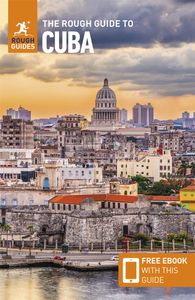Brief history of Baracoa
Baracoa – Nuestra Señora de la Asunción de Baracoa – was the first town to be established in Cuba, founded by Diego de Velázquez in August 1511 on a spot christened Porto Santo in 1492 by Christopher Columbus who, as legend has it, planted a cross in the soil. The early conquistadors never quite succeeded in exterminating the indigenous population, and today Baracoa is the only place in Cuba where descendants of the Taíno can still be found. Their legacy is also present in the food and transport and several myths and legends habitually told to visitors.
Baracoa’s forts
As a defence against marauding pirates in the eighteenth and nineteenth century, the Captain of Baracoa, one Pedro Oviedo, ordered the fortifications of three forts in Baracoa between 1739 and 1742. Castillo Seburuco, which overlooks the town and El Yunque from the northern hills, has been converted into a hotel, while the Malecón is sealed by La Punta, now a restaurant, a door in its western wall that leads down a flight of stairs to the tiny Playa La Punta, a good spot for a quiet dip. East of the centre, past the shops and the triangular Parque Maceo – complete with bust – is Fuerte Matachín, a well-preserved structure with the original cannons ranged along its walls. The cool interior now houses the town museum, with a good collection of delicately striped polymitas snail shells, some Amerindian relics and a history of the town’s most celebrated characters.
El Yunque
As square as a slab of butter, 575m El Yunque, 10km west of Baracoa and streaked in mist, seems to float above the other mountains in the Sagua Baracoa range. Christopher Columbus noted its conspicuousness: his journal entry of November 27, 1492, mentions a “high square mountain which seemed to be an island” seen on his approach to shore – no other mountain fits the description as well. El Yunque is the remnant of a huge plateau that dominated the region in its primordial past. Isolated for millions of years, its square summit has evolved unique species of ferns and palms, and much of the forest is still virgin, a haven for rare plants including orchids and bright red epiphytes. The energetic though not unduly strenuous hike to the summit should take about two hours.
A shorter and easier option is a guided trek to a waterfall within the protected area. After a 2km walk you reach a pristine lake, perfect for bathing in. An easy enough fifty-metre scramble then takes you to a pretty waterfall. It’s well worth it for a short morning excursion.
La Farola
Before the Revolution, Baracoa was only accessible by sea, but the opening of the La Farola road in 1965 changed all that, providing a direct link with Guantánamo 120km away, and allowing a flood of cars to pour into the previously little-visited town. Considered one of the triumphs of the Revolution, the road was actually started by Batista’s regime, but was temporarily abandoned when he refused to pay a fair wage to the workers, and work was only resumed in the 1960s. Today, La Farola makes for an amazing trip through the knife-sharp peaks of the Cuchillas de Baracoa mountains. However the route should only be attempted in daylight, as the steep banks bordering the road in places, combined with a cracked and broken road surface, make it extremely dangerous in the dark. Work has been due to start on repaving the coastal road to Moa for several years; once this is complete, La Farola will be closed to fix the bridges that are sinking.
Top image: Baracoa, Cuba © Tupungato/Shutterstock



















